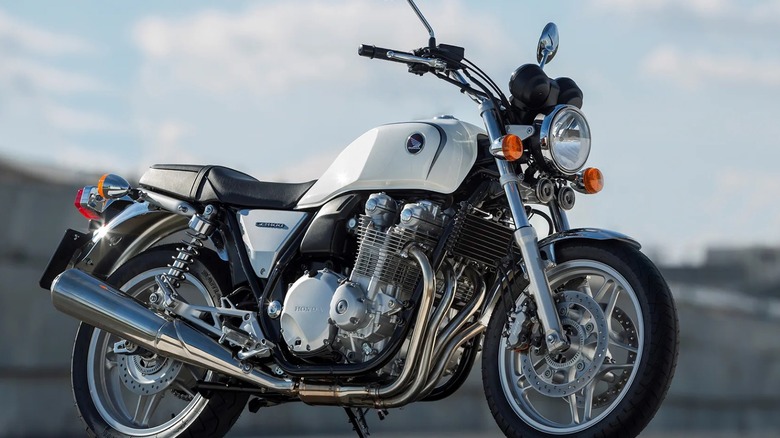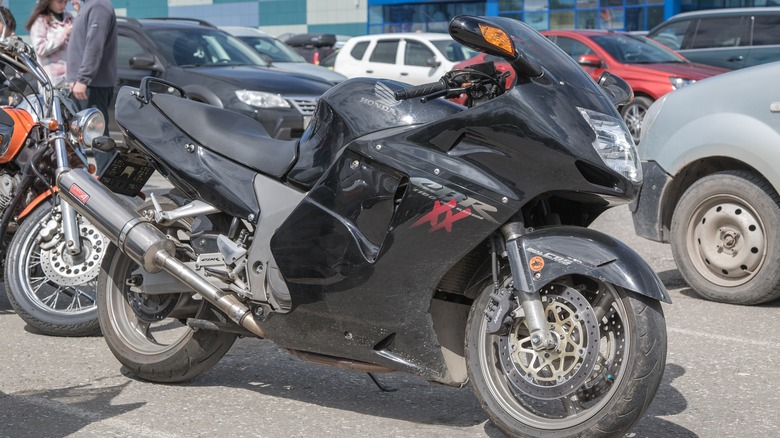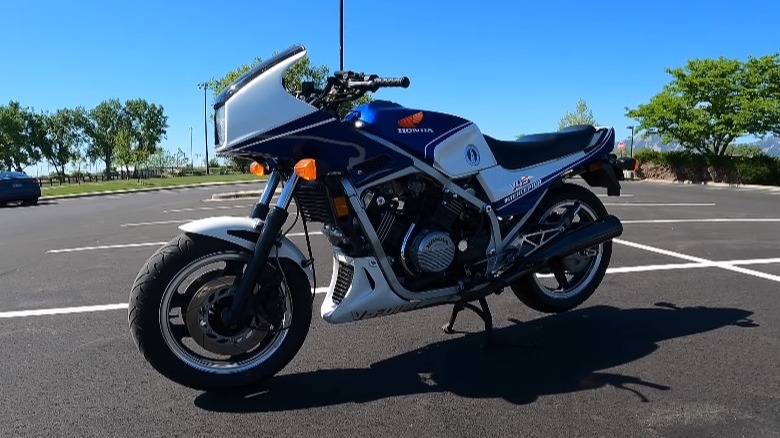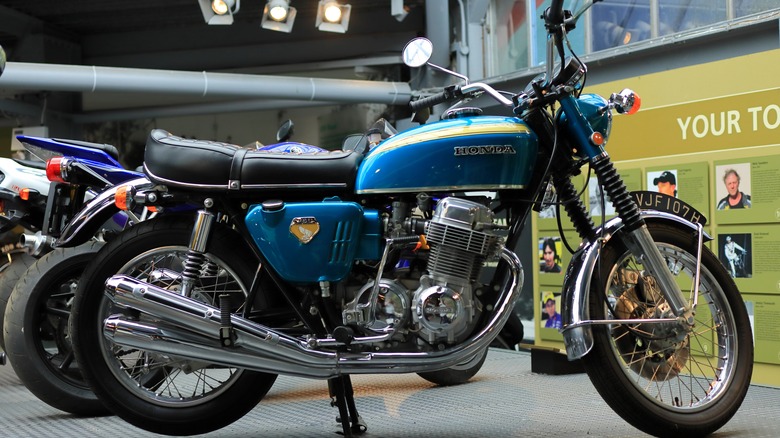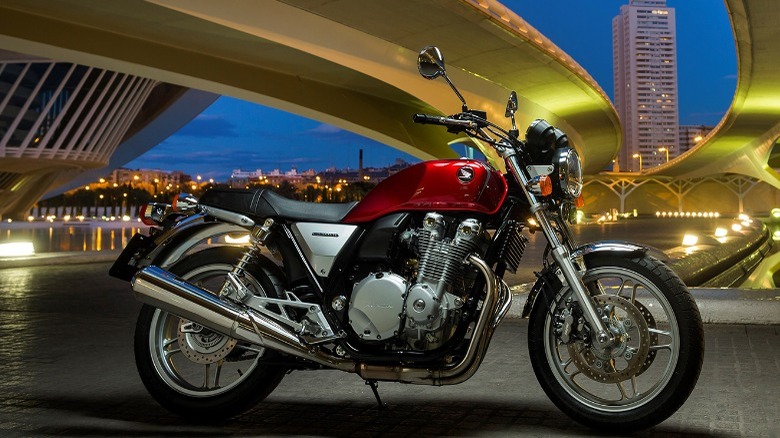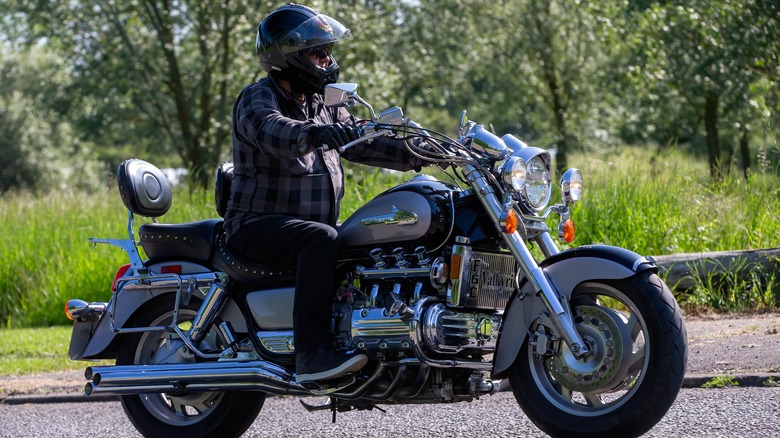5 Discontinued Honda Motorcycles We Want To See Again In 2025
Honda has been the top-selling motorcycle manufacturer in the world for half a century. It's produced dozens of models during this tenure in every style, from children's entry-level dirt bikes to high-performance competitive sport racing motorcycles. Some of these models didn't work out for one reason or another, dropping off Honda's product line shortly after they were introduced. There are several other models that Honda has discontinued that we'd like to see again, though.
I've been a Honda rider for almost twenty years. I learned to ride on an old '85 Interceptor VF 500F, and I've been a fan of the company ever since. Looking back on Honda's decades-old catalog, there are plenty of bikes that were products of their time. These had their place in the market when Honda first introduced them, but they've long since run their course and probably wouldn't have much appeal to a modern market. That said, there are a lot of bikes that feel like they deserve a comeback. Some of these discontinued models are timeless classics, while others could offer a more retro alternative for those who aren't as big a fan of Honda's current trend toward ultra-modern styling. With that in mind, here are five of the Honda motorcycles we'd like to see again in 2025.
Honda CBR1100XX Super Blackbird
The CBR line has dominated Honda's sport bike lineup for a good while now, but there have been several iterations and design changes over the years, and some of the more interesting designs have been left by the wayside. There's nothing wrong with the current line of CBRs per se (I ride one myself), but they do have a certain angular aesthetic that's very similar to the designs you might see from Yamaha, Suzuki, and Kawasaki.
The Honda CBR1100XX Super Blackbird was a special large-engine hyperbike that was largely designed as a competitor to Kawasaki's ZZ-R1100. It was in production from 1996 to 2007 and was widely renowned for its power, reliability, and overall build quality. Its large frame was quite heavy, sitting at 492 lbs, which reportedly gave riders some cornering trouble, but its speed, stability, and comfort made it a monster on straightaways that could also serve as an excellent highway commuter. In fact, the Blackbird is often counted as one of the fastest motorcycles Honda ever built.
A modern redesign of the Super Blackbird could bring back the elegant, low-weighted silhouette that the Blackbird was known for while curbing some of the past models' weaknesses by lightening the load and adding the benefits of modern suspension technology. There are still plenty of Blackbird fans that would line up for that.
Honda VF750F Interceptor
A big part of what made Honda the superpower in the motorcycle industry that it is today was the spike in popularity that Japanese sport bikes had in the 1980s. The Honda Interceptor was a memorable part of that era. The earliest version of it ran from 1983 to 1985. The VF750 of this generation was particularly popular as a 750cc engine technically qualified as a superbike at the time. This was competing against other popular bikes with similar designs from rival companies like the Kawasaki GPZ series, which we saw Tom Cruz riding in "Top Gun."
The Interceptor received several redesigns after this in 1986, 1990, 1992, 1994, 1998, 2002, 2010, and 2014 before it was finally discontinued. I mentioned before that my first bike was an Interceptor, so part of this may admittedly be the nostalgia talking, but there is a classic feel to the older Interceptor generations' squared-off design that really stands out from most modern motorcycles. Honda's early designs were rife with influences from fighter planes and aeronautics that seem to have gotten lost in the CBR line. This sense of style is part of the reason Interceptors still turn heads today. It would be cool to see Honda return to their roots with a new upper-mid-sized Interceptor that offers both style with modern reliability and comfort.
Honda CB750
When you take a look back at Honda's most popular motorcycles, you're bound to stumble across the CB750 at one point or another. This is not to be confused with the CR750, which is a sport bike. The CB750 is a midweight street bike and is frequently counted among the best Honda motorcycles ever made. The first generation, called the Dream, was released in 1969 and was a cornerstone of Honda's commercial market in America, as it was one of the company's first attempts to compete with the large motorcycles that were predominantly being manufactured in America at the time.
This is another bike that has undergone numerous evolutions in the decades since. The final model to be sold in the US ran from 1992-2007. The CB750 Hornet is technically still in production overseas, but it isn't available in the US, and it has taken on a more street fighter-inspired design that does little to harken back to its predecessor. It would be nice to see Honda also currently has a CB650R and a CB1000R that are both closer in spirit to the Dream, but it would still be nice to see the company fill the 750cc gap in its street bike line with a more classically inspired version of the CB750 that also has the comfort, performance, and convenience of a modern motorcycle.
Honda CB1100
In case you're wondering if these retro callbacks are just wishful thinking, it's worth remembering that Honda has done something similar in the past. One of the best examples of this was when Honda produced the CB1100. This bike was launched in Europe in 2013 and was heavily influenced by the CB750. It had the round LED headlamp, the twin exhausts, the chrome dual-dial dash, and the long bench. This bike was in production for just over a decade before it was discontinued in 2022. But the CB1100 isn't just an imitation; it's a motorcycle that deserves a modern remake all its own.
The CB1100 had several updates and improvements from the older model, but the main difference was the uptick in raw power that it got with its 1,140cc, four-stroke, air-cooled, DOHC, inline four engine. This gave it 89 horsepower at 7,500 RPM and 68 lb-ft of torque at 5,500 RPM. This is plenty of power for both urban commuting and highway cruising with a good boost off the starting line, so the bike never feels sluggish. A remodel could provide a high-performance ride for classic bike fans who want the power and technology that comes with a modern Honda.
Honda GLX 1500 Valkyrie
Now, let's take a look at some of Honda's cruisers. Most of the cruiser motorcycles that Honda currently makes have relatively small engines, particularly when compared to the inventory of American companies like Harley Davidson and Indian Motorcycle. Both versions of the Honda Shadow are 750cc. There's the Rebel 500, two Rebels that are 1,100cc, and then there's the Fury, which is the largest cruiser in Honda's current lineup with a 1,300cc engine. These aren't exactly small, but it's hard to compare them to the 1,870cc Milwaukee-Eight 114 engines that are currently sitting in Harley's larger models. Honda has made bigger bikes in the past, though.
The Honda GLX 1500 Valkyrie first hit lots in 1997 and ran until 2003. The original design impetus was to take the architecture of the Gold Wing, strip it back, and modify it into an American-inspired cruiser. The end result was a stylish bike powered by the enormous 4th generation Gold Wing's 1,520cc liquid-cooled, horizontally opposed flat-six engine. This bike had six 28mm carburetors and a modified camshaft. This gave it about 100 hp at 6,000 RPM. So, it's no surprise that many riders think of it as one of the best Honda motorcycles for long-distance cruising.
Japanese cruisers are often overlooked when compared to their American counterparts, but the GLX Valkarie has managed to go toe-to-toe with giants in the past, and it would be very interesting to see what Honda could do with one today.
